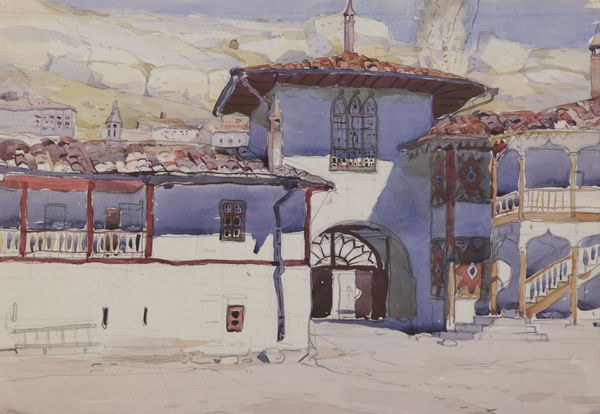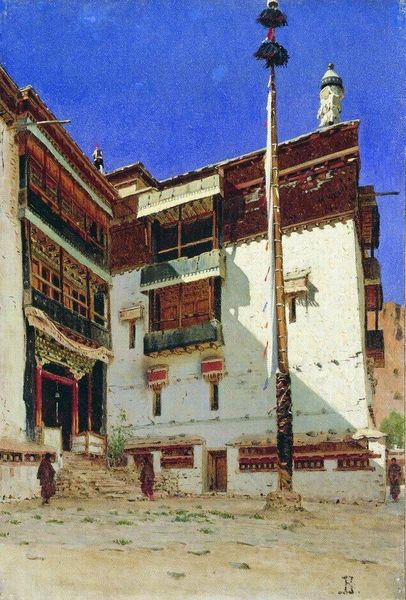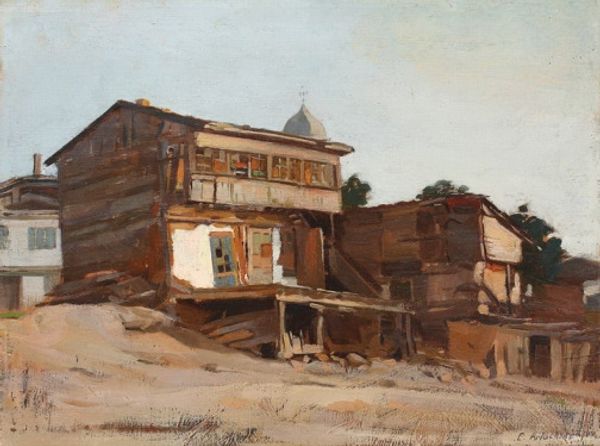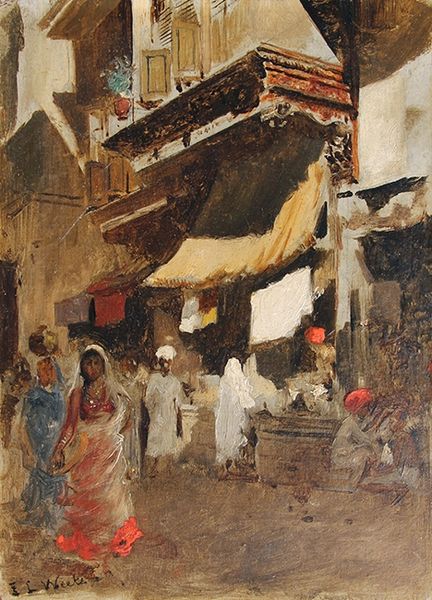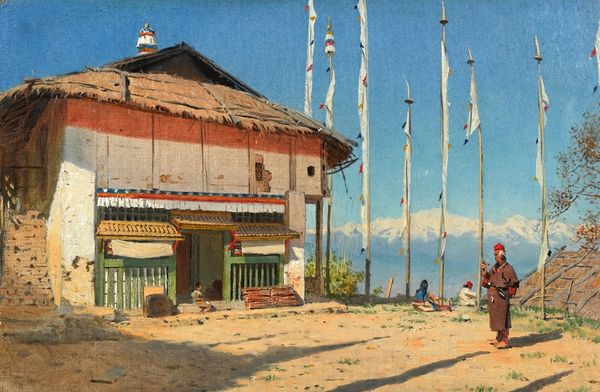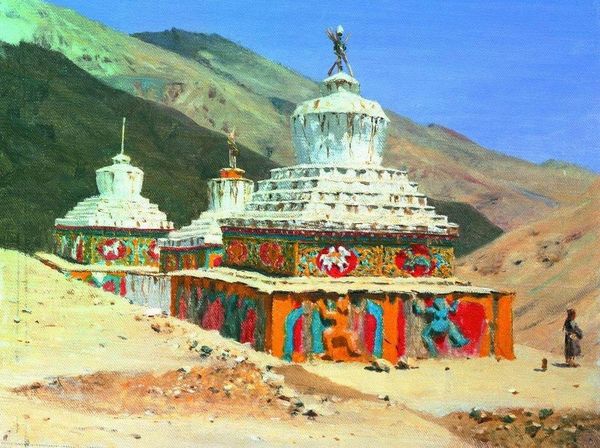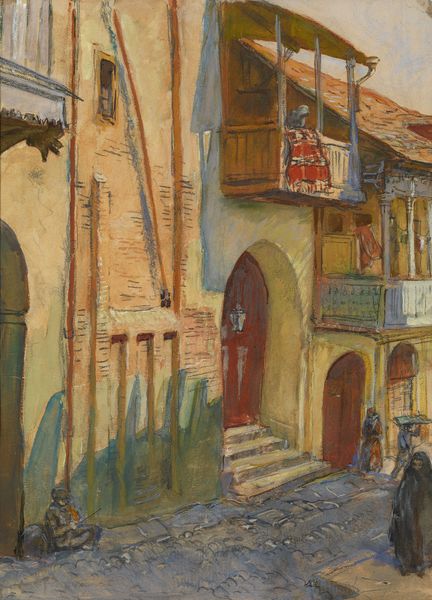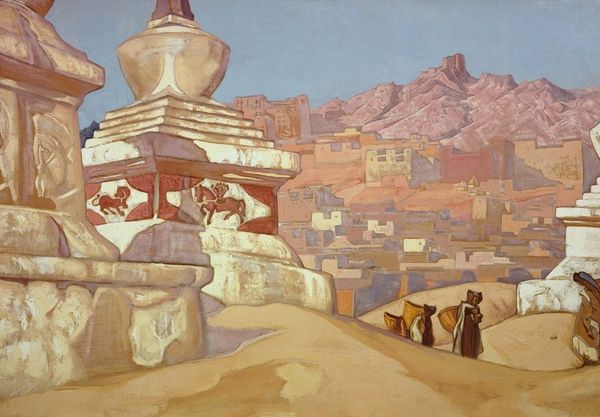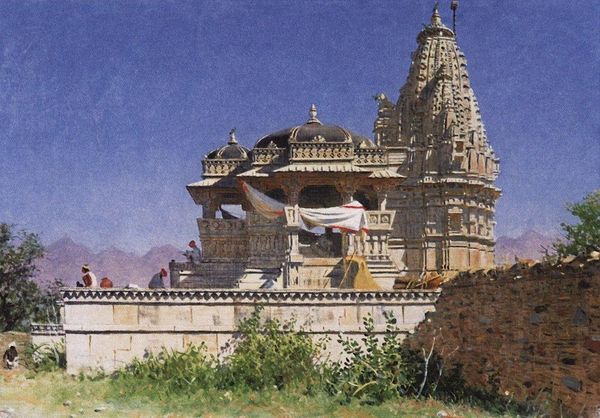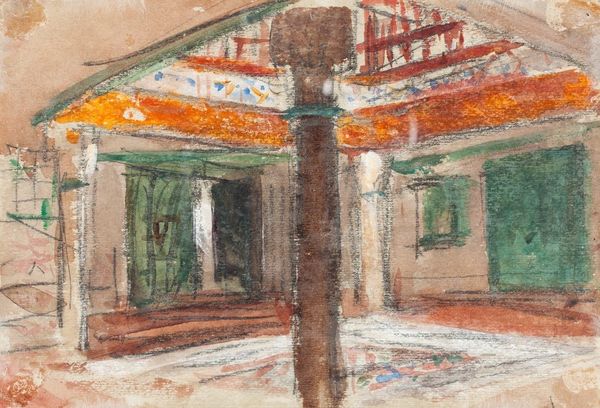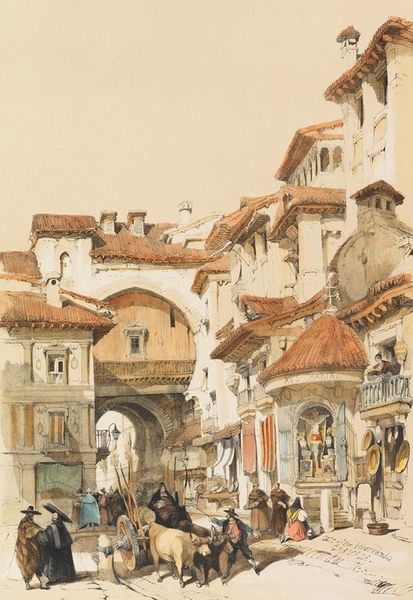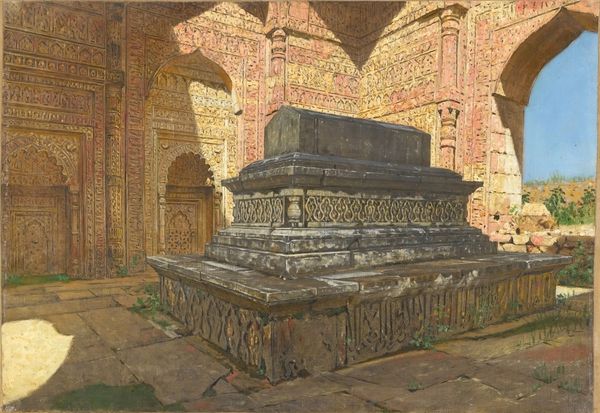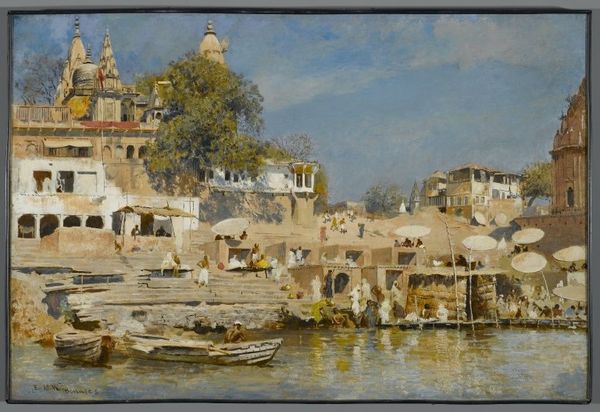
tempera, painting, oil-paint
#
tempera
#
painting
#
oil-paint
#
asian-art
#
landscape
#
oil painting
#
orientalism
#
history-painting
#
realism
Copyright: Public Domain: Artvee
Editor: This is Vasily Vereshchagin’s "Hemis Monastery in Ladakh," painted around 1875 using oil and tempera. It's so striking; the architecture feels both imposing and very meticulously observed. What stands out to you about this work? Curator: What immediately grabs my attention is its position within the discourse of Orientalism in 19th-century art. Vereshchagin, a Russian artist, depicts a Tibetan monastery, engaging with a Western fascination for the 'exotic' East. Editor: So, it's not just a landscape; there's a political dimension too? Curator: Precisely. Think about who controlled the narrative. This painting, while seemingly a realistic depiction, reinforces a power dynamic where the West gazes upon and interprets the East. The artist isn't merely documenting; he's shaping perception for a Western audience, inviting the viewer into the picturesque and culturally distant locale. Consider how the depiction reinforces ideas about the spiritualism or exoticism associated with the region, versus any real engagement. How might a contemporary Ladakhi artist approach the same subject? Editor: That's a really important perspective. I was so focused on the building itself and its texture but viewing it within its historical moment of Orientalism, it challenges you to question the artist’s intentions and audience’s perception. I’ll keep that in mind going forward! Curator: It also underlines the important role that museums have in deconstructing problematic past and current displays.
Comments
No comments
Be the first to comment and join the conversation on the ultimate creative platform.
